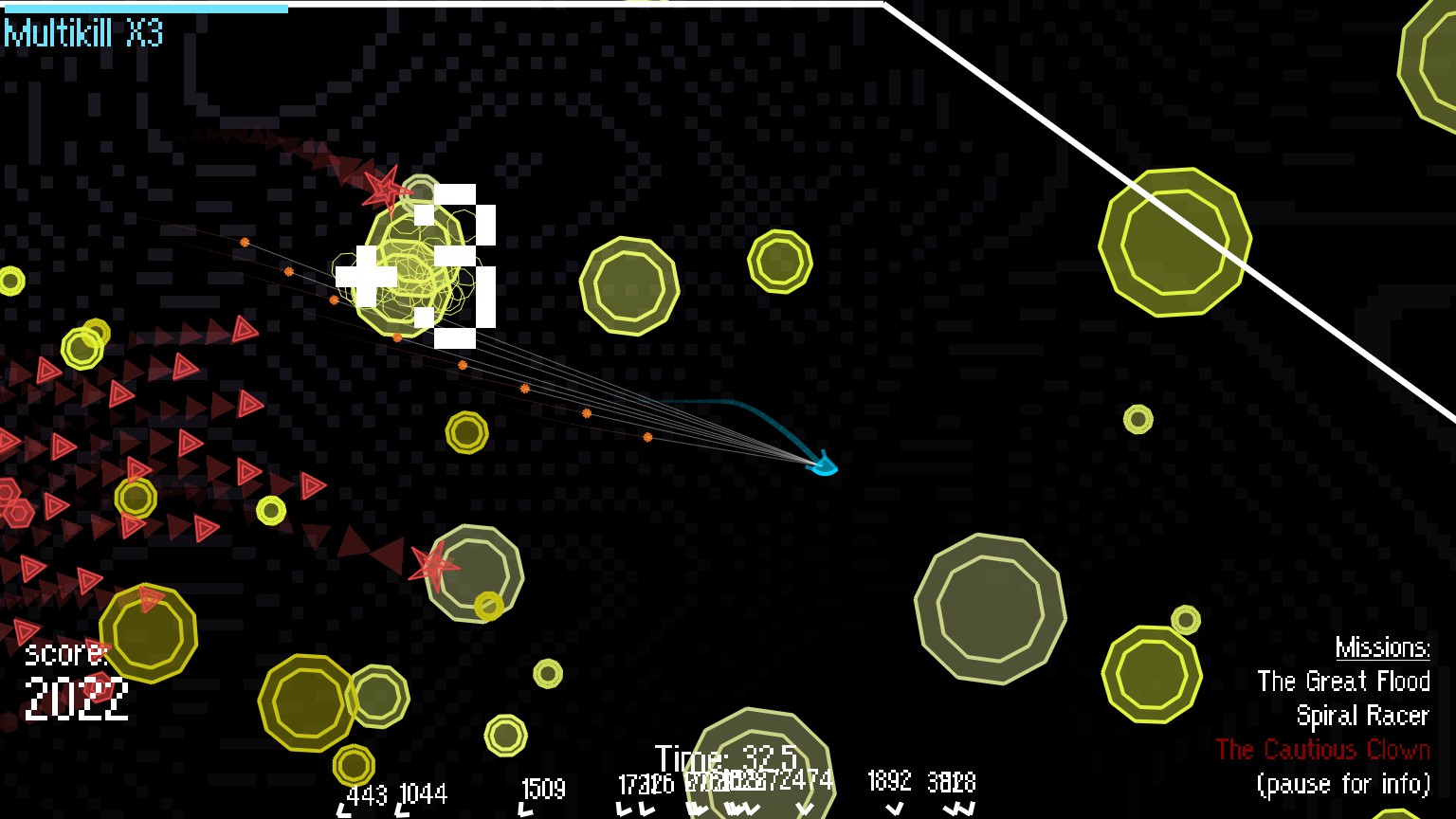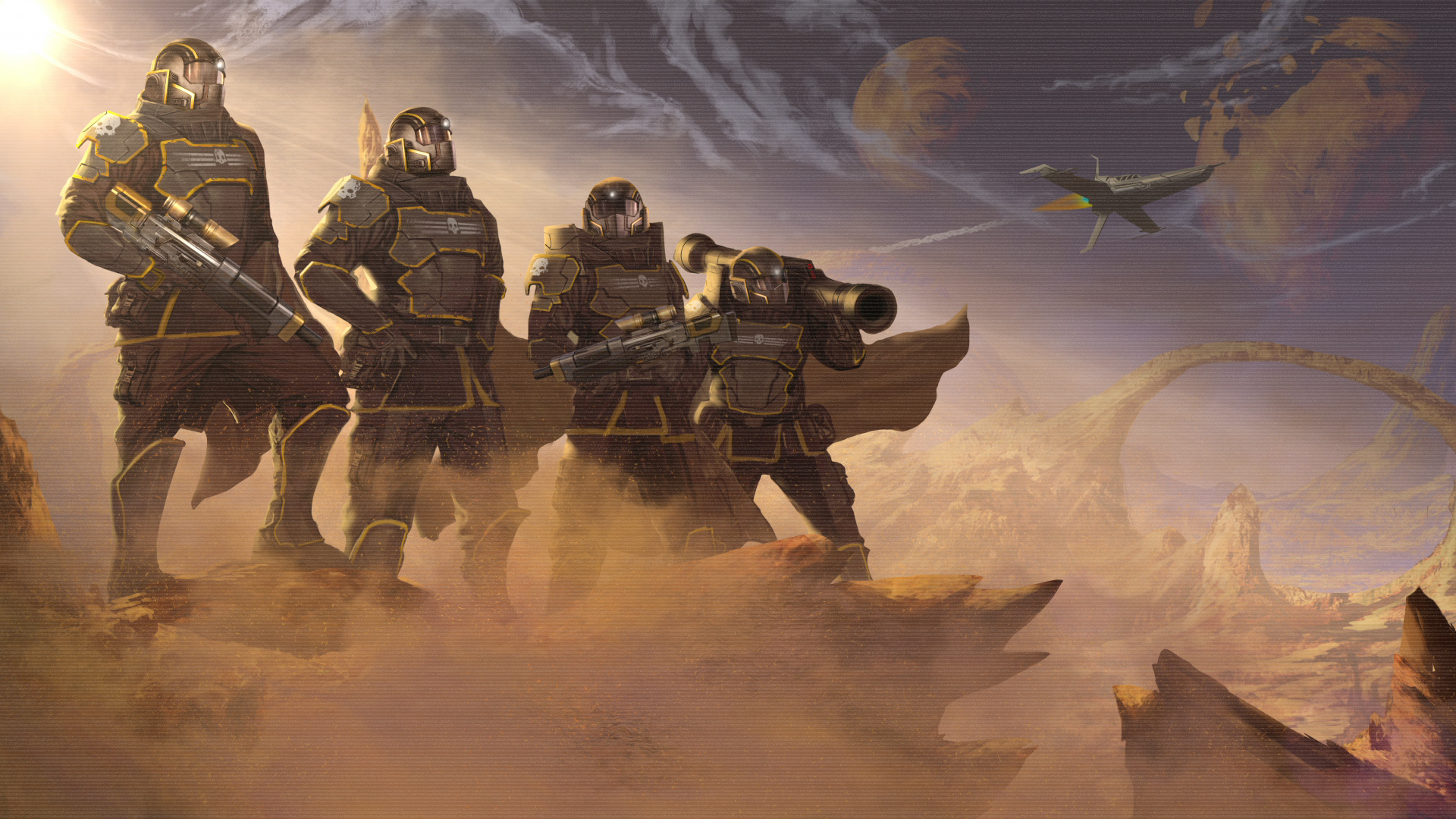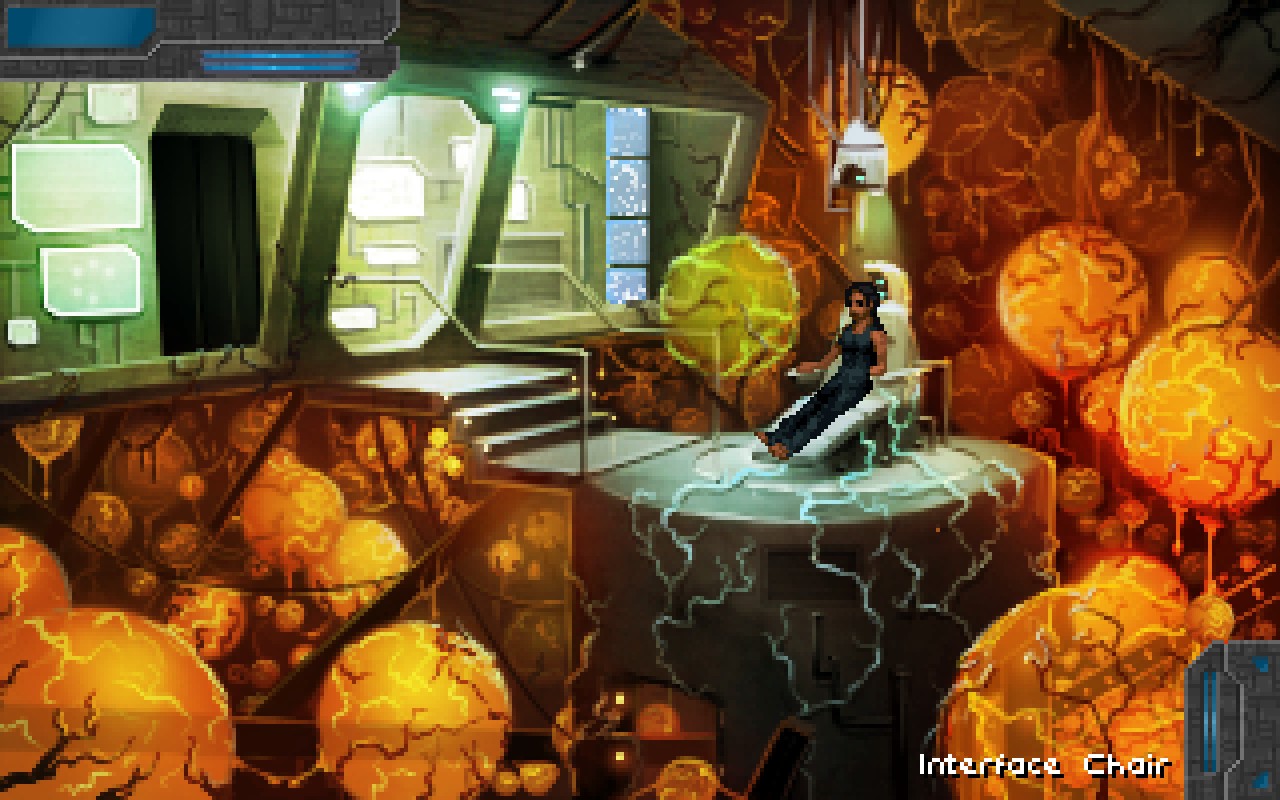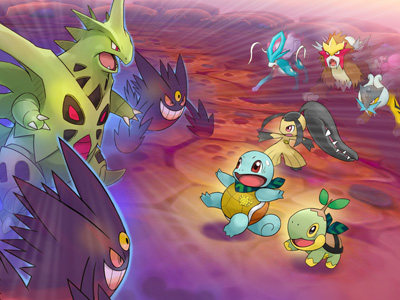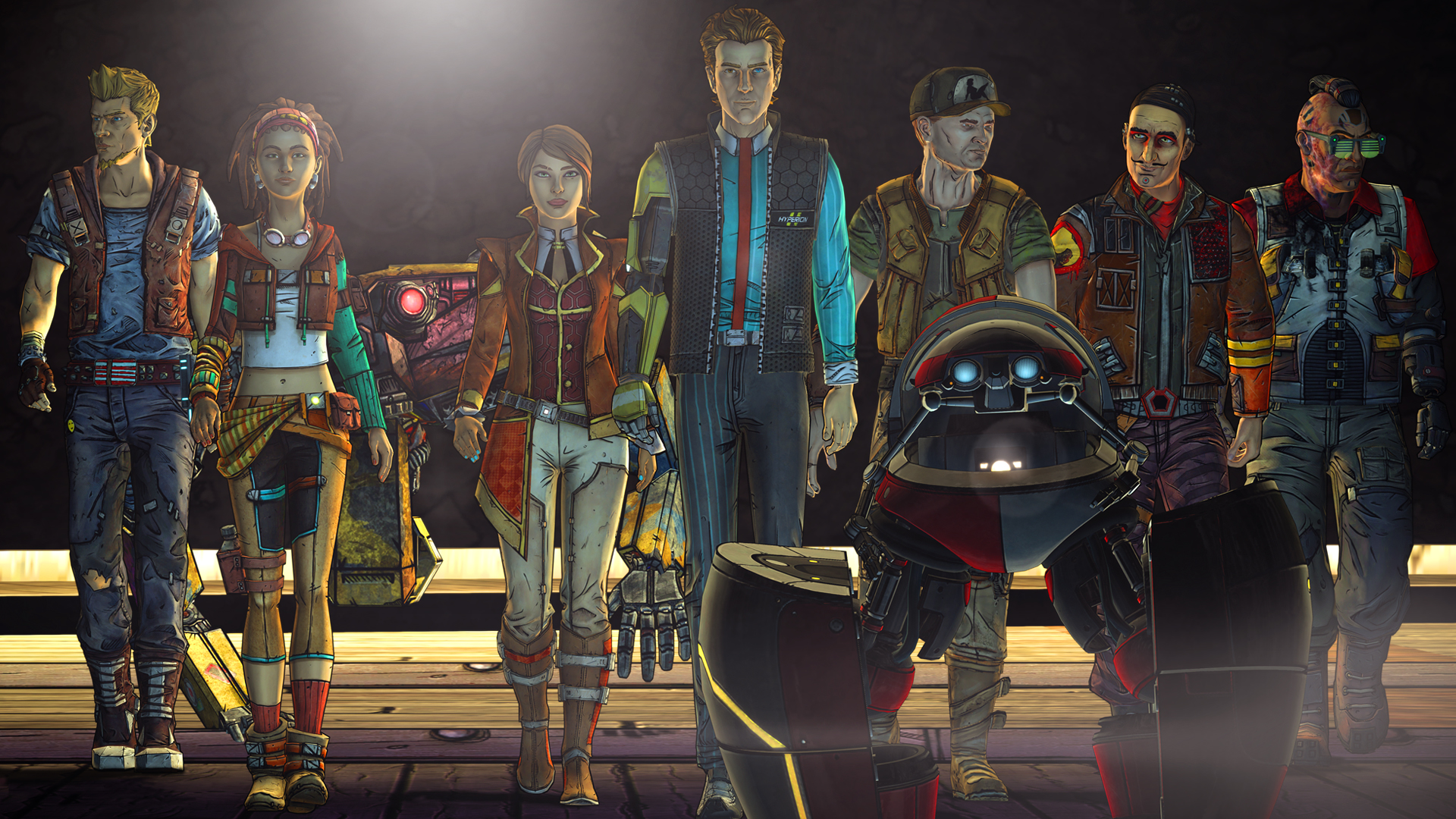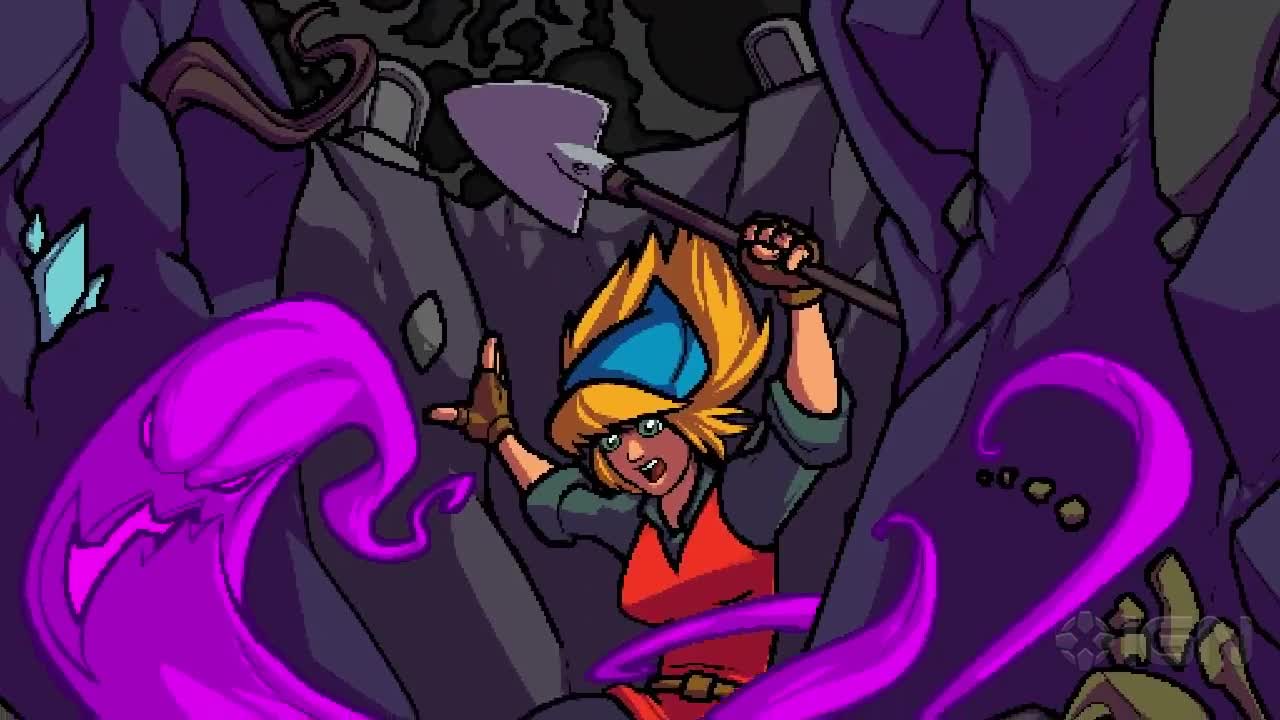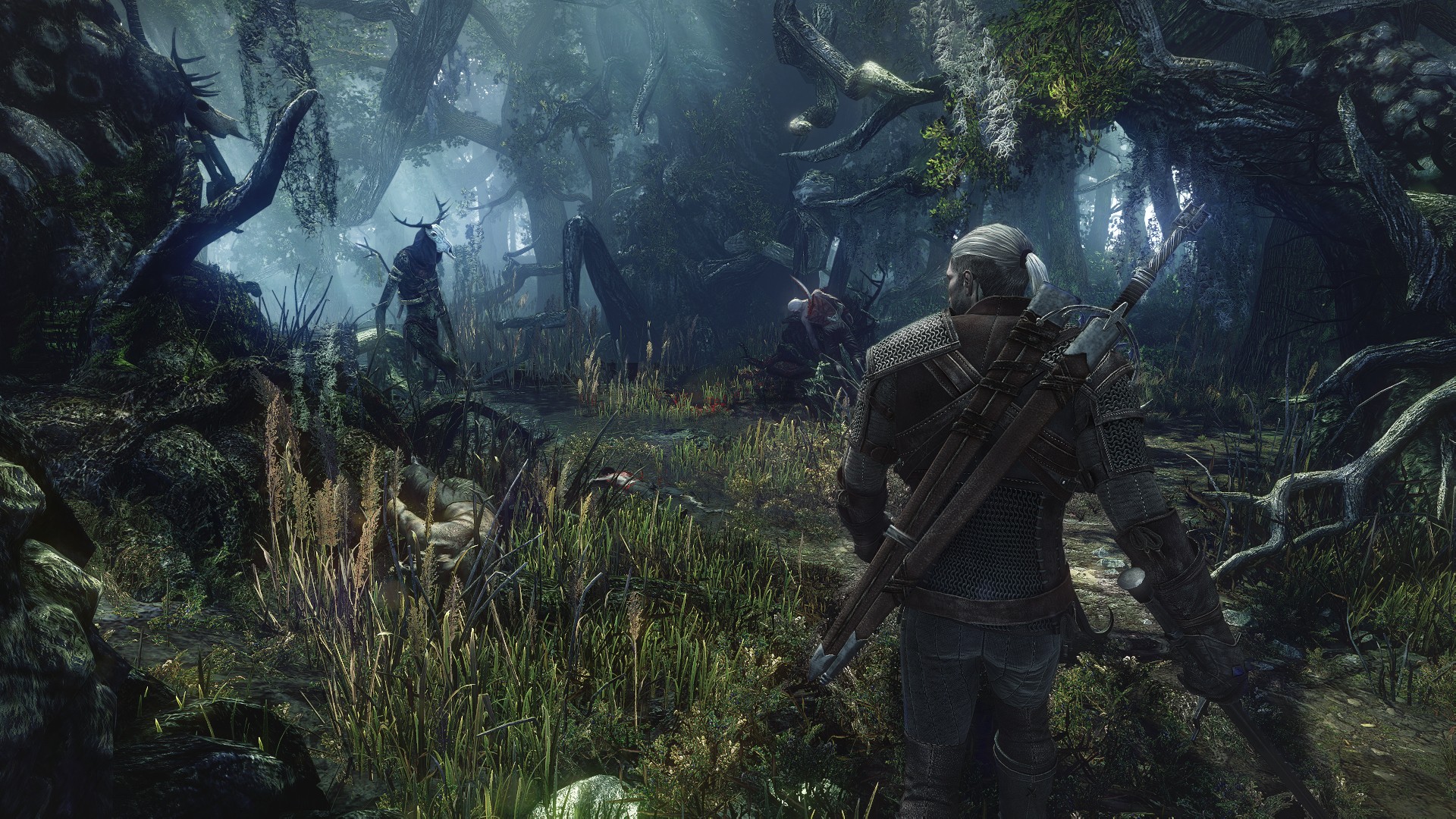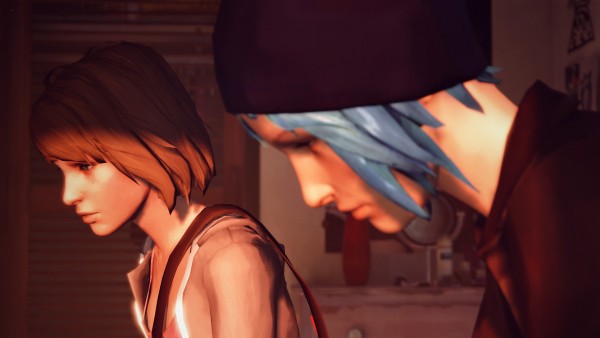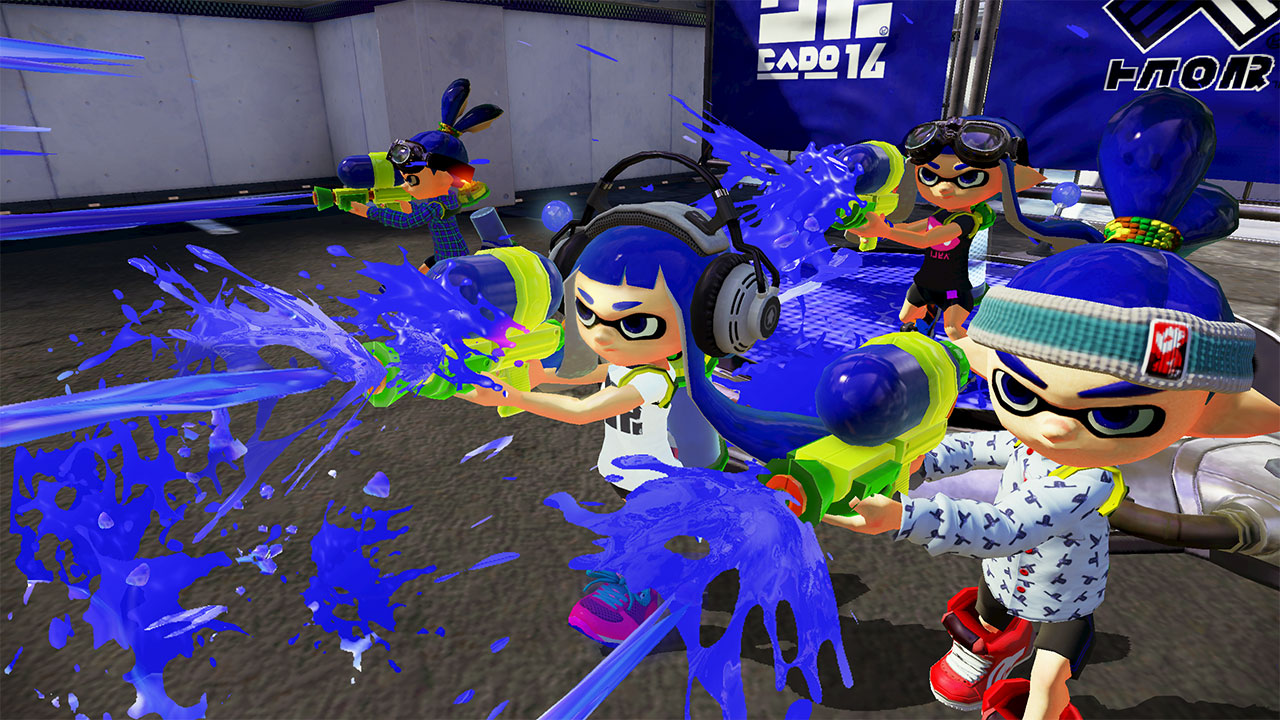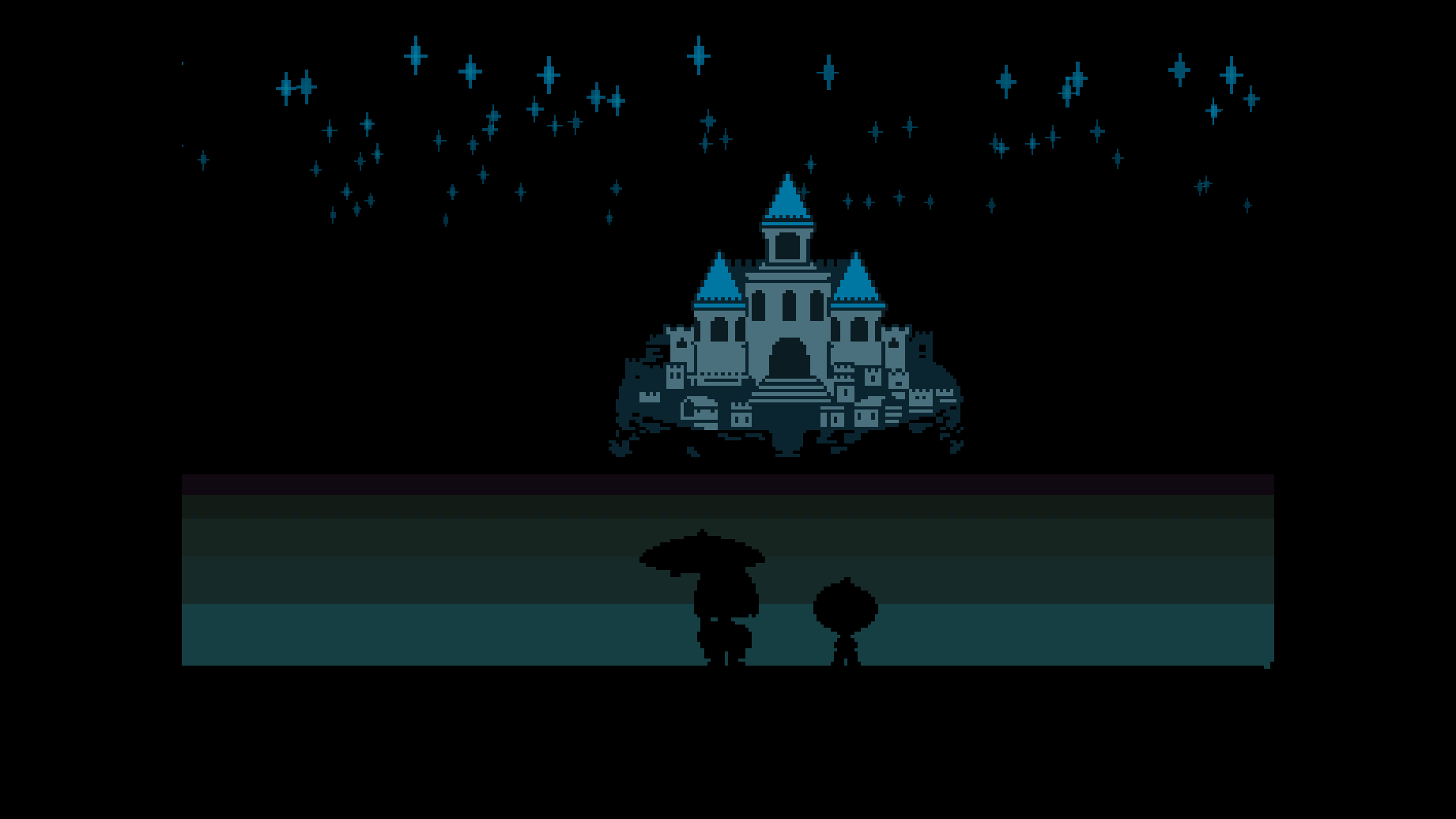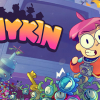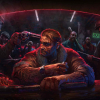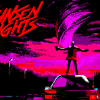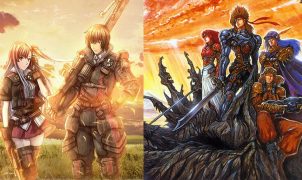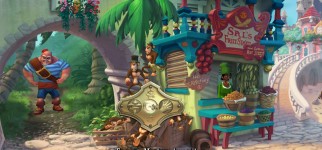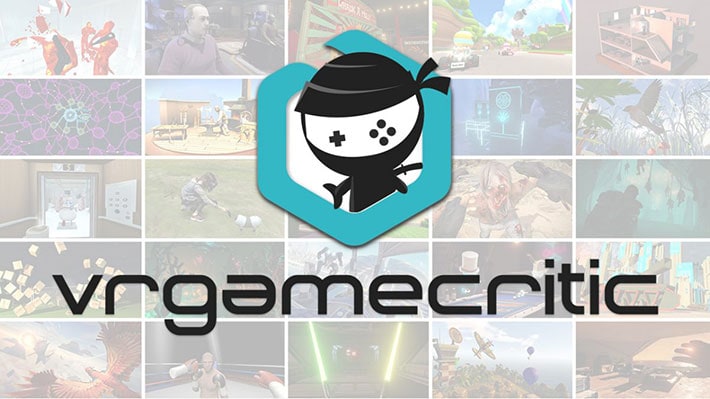Here we are. Born to be kings. We are princes of the playerverse.
2015 was a fantastic year for games. Back in 2014, it was actually a little difficult to scrape together 10 new games that I could say I enjoyed enough to rank. This year, though, has been a very different story, as I found myself having to narrow things down from a list of 22 games. I’ve had a lot of great times with narratives and cool mechanics alike in 2015, so here are my favorites. Honestly, I would even say a bunch in the middle of this list are interchangeable. Also, just as a note: I personally choose not to put any re-releases or ports of older games on my list.
As always, let’s make it clear that all of our personal GotY lists here at HPP are purely subjective. If you want to know Hey Poor Player’s official Game of the Year, we did a whole podcast on it a couple weeks ago. Check it out! With that out of the way, it’s time for the regrettable chain of decisions known simply as “having an opinion on the internet.” Let’s go.
10. Particle Mace
That’s right, folks; I’m starting right off with some weird indie stuff. Particle Mace came around back in the beginning of 2015, and really never got a lot of attention. I picked it up purely on recommendation from a friend and associate, and didn’t really know what to expect. Imagine my pleasant surprise as I proceeded to enjoy several hours of the purest arcade-y fun I had experienced in a very long time.
Particle Mace is a very simple pleasure, but one that succeeds in droves. The player pilots a spaceship trying to survive against enemies and asteroids, swinging around clusters of space junk that operate like a mace. A space mace, if you will. Different ships with varying speeds, weights, and mace types turn Particle Mace into the most fun you can have while rotating a joystick around in circles. For more about rotating joysticks in circles, try circling yourself around our review.
9. Helldivers
You know the sayings about Mario Kart ruining friendships? I never quite had that experience while playing as an Italian plumber driving a goofy car, but I’ve certainly experienced it in other places. Super Smash Bros has always been the quintessential example to come to my mind, as something that I’ve seen bond people together and tear them brutally apart in equal measure over the years. Now, though, a new contender has been deployed, and it just accidentally squashed all of its teammates upon impact.
Helldivers is brutal, manic, and a hell (puns!) of a lot of fun. It takes the notion of “Diablo with guns” and adds the system of a larger, real-time campaign. There’s something magical about being part of a larger push, where each match you and your friends win or lose affects the struggle to get closer to one of the three alien homeworlds that are sending as full-frontal assault into the rest of the galaxy. My three friends and I can gather together and play a few matches, each becoming more skilled and adept with our roles within the team (I favor the sniper rifle and barbed wire). It genuinely feels like any one team is a squad in this greater war; a war against bugs, robots, and the Illuminati. Wait, no, that last one is wrong.
8. Technobabylon
“Oh hey, it’s more weird indie stuff. God damn it, Petrequin! Where’s my AAA Dorito-branded Call of Battlefront Syndicate?!?!?!” Hush, little Morlock. Let me talk about my weird, existential cyberpunk adventure.
Technobabylon was going to be make-or-break for me. In 2014, I fell in love with Wadjet Eye’s visual and storytelling styles with The Blackwell Epiphany, only to be thoroughly disappointed later that year by their Fall offering of A Golden Wake. What Wadjet Eye needed was a game with a truly gripping story, and some clever game design that would keep their typical schemes from becoming predictable.
In the end, Technobabylon succeeded on all fronts, becoming not only my favorite Wadjet Eye game, but also one of my favorite point-and-click adventure games of its type. The cyberpunk future Technobabylon presents feels real, and well thought-out to a fault. What’s more, its level design tricks players, playing with their expectations and luring them into false senses of security. For anyone looking for a fresh-but-traditional adventure game experience, Technobabylon is the new bar. For exact measurements on the height of said bar, check out our review.
7. Pokemon Super Mystery Dungeon
Oh, Pokemon Mystery Dungeon series, you temperamental thing. The original games, an oddly staggered GBA/DS pair, were a good starting point that I enjoyed thoroughly almost a decade ago. After that, Explorers of Time and Explorers of Darkness were amazing continuations of the spirit and mechanics that made worlds of Pokemon and Mystery Dungeon fit so well; enough so that I would still count them as among my favorite Pokemon games today, spinoff or no. The first 3DS entry, Gates to Infinity, then proceeded to strip the series of all of the spirit and soul that had made it endearing, leaving only a half-assed husk with an angle it couldn’t sell. A couple years later, here we are.
Pokemon Super Mystery Dungeon feels like a delicious beverage, concocted from a syrupy extract of the best elements of the Mystery Dungeon series, complimented by some delicious new flavor notes all its own. The spirit and charming writing that made the series worthwhile in the first place is back in full force, along with gameplay that provides more challenge than any previous game in the series. Pokemon Super Mystery Dungeon has been touted as the “essential Mystery Dungeon experience,” and it is exactly that. It’s the broadest in scope of any entry in this roguelike series, and no inch of that space feels wasted. One of our newest writers, the glorious and Spivvyous Anthony Spivey, made his debut by reviewing the game.
6. Tales from the Borderlands
Telltale, you’ve done it again. Last year, The Wolf Among Us clawed its way all the way up to the #2 spot on my list. Tales from the Borderlands‘ lower place isn’t due to lower quality, as much as it is to the higher number of really good games that came out this year. In fact, Tales from the Borderlands is, without a doubt, my favorite game in Telltale’s run of licensed titles over the last few years.
Tales from the Borderlands grabbed me because it was, by far, the most entertaining and compelling story Telltale has told in years. It’s bitingly funny and wickedly fast-paced, the latter being especially important in contrasting this game from work like The Walking Dead. It also mirrors The Wolf Among Us in the connection of all the game’s choices into the final episode. The entire final episode is utterly perfect, and even the fourth episode (following the Telltale curse of weak semifinal episodes) was a delight. Hopping between two main charac
ters was a fun way to change up the narrative, and everyone around them was just as engaging. Tales from the Borderlands is a heist story worth the theft. Frank reviewed all five episodes.
5. Crypt of the Necrodancer
As much as I love games, and writing, I also love music. I come from a very musical family; my mother is a professional pianist, and my father has been playing and building banjos since before leaving his teenage years. I play bass, and have some thing vaguely resembling a band with some friends. Music is an important part of my life, and so are music-based video games. Rock Band and Guitar Hero are great if you want to emulate something you can’t actually play, and Rocksmith is a fantastic tool if you want to learn how to be better at guitar. All of that said, it’s almost more exciting to me altogether to see a game that takes music and uses it as a mechanic in a more special way than “here is the song, now go play the song.” I think the Crypt of the Necrodancer team heard my pleas, took a scan of my brain, and made their game just for me.
Crypt of the Necrodancer is an entirely direction-based rhythmic roguelike. Danny B, of Super Meat Boy and Binding of Issac fame, does an incredible soundtrack, but the buck doesn’t stop with him. The game can use any mp3 file on the player’s computer as the soundtrack to a level, so long as it can find a rhythm to operate on. I have slayed dragons to Daft Punk, melted ice elementals to the tune of “Enter Sandman,” and looted treasure chests while bouncing along to Savant and Tycho songs. Crypt of the Necrodancer does this really wonderful thing, wherein the players ability with the game becomes tied to their knowledge of the song at hand. This type of synchronicity is really beautiful to behold. Listen to me sing more songs of praise in my review.
4. The Witcher 3
Uh oh, why is The Witcher here, and not up at #1? I must be some kind of real goon, huh? It’s true; when telling people that The Witcher 3 had not instantly become my new game of the year, I received a variety of responses. A few people understood, but some couldn’t comprehend how I hadn’t found life’s one true love nestled in Geralt’s gross hair.
None of this, of course, is to say The Witcher 3 was not great; otherwise, it wouldn’t be on this list! There’s something uniqu about being Geralt. When faced with a moral choice, I got to make my decision based not on values, but on the fact that Witchers are, quiet literally, soulless mercs who don’t really give a shit. Geralt wants to find Ciri, sure. Outside of that mission, though, he is driven by coin and coin alone. It’s fun being a professional.
Really, it’s that sense of being a professional monster killer that makes The Witcher 3. There’s a level-up system, sure, but the game never makes players feel as if they aren’t already an expert at the beginning. You already have two swords, five magical signs, and the plans for all sorts of alchemical concoctions to brew. The tools are all there from the beginning. It’s a good thing, too, because also there from the start are a wide host of monsters sprinkled across Geralt’s vast world. The only thing holding your hand is the deathgrip of the 15th Drowner to grab at you that day. If you somehow need more people telling you to play this thing, read our review.
3. Life is Strange
Life is Strange is the third adventure game on my list. Don’t worry, people angry that my list isn’t full of bloody first-person shooters, because it’s also the last. While I love Technobabylon and Tales from the Borderlands both, Life is Strange managed to pull me in in a way that neither of those other games managed to accomplish. Through a few faults and a mile-long string of successes, Life is Strange fuses gameplay mechanics and storytelling better than any game of its ilk.
There’s just something wonderful about the whole Life is Strange package. No, it’s not perfect, with some hokey dialogue and a questionable final episode. But its whole run has a beautiful, dreamlike atmosphere that pulls players into a story that feels as if Twin Peaks had been directed by Wes Anderson. The story is beautifully told, and the game’s central time travel mechanic is one of the coolest things I have ever seen in a cinematic game. I want to go back to various points scattered across the game’s five episodes and try out different tricks and choices, just to get a look at some of the potential outcomes I never personally saw. There are moments in Life is Strange that will always be fresh Polaroids in my mind. For more picturesque impressions, check out my episodic reviews.
2. Splatoon
Hear ye, thou who art a kid now. Hear ye, thou who art a squid now. Ink up, and take to the streets, in the game that proved Nintendo is capable of making a quality online gaming experience. Splatoon not only goes toe-to-toe with other competitive online shooty-types out there, but leaves them with paint all over their faces.
Splatoon is this fervent, manic type of fun that I’ve always found lacking in stuff like Call of Duty and Battlefield. The lighthearted nature of Nintendo’s game of extreme paintball is strong, as is the fact that the game is tactically really fun to play. It’s not only a dude-shooter, but a stuff-splasher, where increasing player-dominated terrain is every bit as important as taking down opponents. Put simply, Splatoon is an online multiplayer experience unlike something else, but which will feel familiar to players of a many types of games. The game has only improved since launch, with new maps and modes that have kept the game alive and its community strong. I plan to keep inking it up well into 2016, and possibly even beyond. Splat your way over to our review.
1. Undertale
If you’ve been listening to the Hey Poor Podcast recently, you’ll know that I absolutely love Undertale. This small indie game did the same thing Bayonetta 2 did the year before, coming out of nowhere at the end of the year and stealing the GotY spot by a mile. I fell down a hole, and landed deep underground. When I woke up, I realized I was in a place I could grow to really love. Undertale is an incredible place to visit. Allow me to tell you why.
A lot of games have attempted to make player choice in game mechanics a deicing factor in the way their stories play out. A lot of games have attempted this, but I always think of it as “the Dishonored factor.” In Dishonored, players are told that their choice to kill enemies or non-lethally deal with them would determine how the story played out. In reality, all that really varied was whether one level did or did not contain some angry rats, and which unsatisfying ending the player would get. This pattern can be found in other games, and I’ve always found myself wanting to see a game that pulled off that kind of system more successfully.
Undertale is that game.
In Undertale, the player can either kill or spare each and every monster they come across. Most players on their first run will do a mix of killing and sparing, which gives a fairly straightforward outcome to the game. However, that route varies from two others; one in which nobody is killed, and one in which nobody is spared. Depending on which way the player experiences of the game, a completely different story is presented. Character relationships are different, boss fights will exist where they had not before, and the story ends in wildly different ways. Undertale pulls off the principle of the differing narrative better than any game I have ever played or personally experienced.
It also helps that its combat gameplay is a clever mix of bullet hell and platforming elements, wrapped up in a turn-based RPG package, which it somehow actually pulls off. Even more helpful is its incredibly well-written cast of characters, and its simple but beautiful art direction. But I’ve said more than enough. Undertale is my game of the year for 2015, and should be something every lover of video games should experience at least once. Or twice! Thrice, even!
Be sure to stick around through the next week, as we continue to roll out everyone else’s game of the year lists. Let us know what you agree with, and what you think is completely wrong! Happy 2016, poor players. Let’s make it another great year.

